

 |
Search the Site with

|
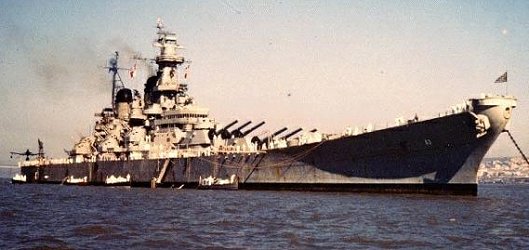
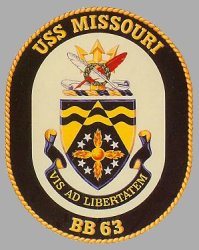
USS MISSOURI was the third ship in the IOWA class and the last battleship commissioned by the United States Navy. MISSOURI was last homeported in Long Beach, Calif., and is now a floating museum in Pearl Harbor, HI. Click here for a photo tour of the USS MISSOURI museum.
| General Characteristics: | Keel laid: January 6, 1941 |
| Launched: January 29, 1944 | |
| Commissioned: June 11, 1944 | |
| Decommissioned: February 26, 1955 | |
| Second commissioning: May 10, 1986 | |
| Second decommissioning: March 31, 1992 | |
| Builder: New York Naval Shipyard, Brooklyn, New York | |
| Propulsion system: eight boilers, four geared turbines | |
| Propellers: four | |
| Length: 889 feet (271 meters) | |
| Beam: 108 feet (32.9 meters) | |
| Draft: 35,7 feet (10.9 meters) | |
| Displacement: Light: approx. 46,000 tons | |
| Full: approx. 57,000 tons | |
| Speed: 33 knots | |
| Aircraft: no hangar, but parking area for four | |
| Last Crew (March 31, 1992): 59 officers and 1,201 enlisted | |
| Crew 1986 - 1991: 65 officers and 1,501 enlisted | |
| WWII Crew: 134 officers and 2,400 enlisted | |
| Last armament: eight armored box launchers for |
Crew List:
This section contains the names of sailors who served aboard USS MISSOURI. It is no official listing but contains the names of sailors who submitted their information.
USS MISSOURI Cruise Books and Pamphlets:
Accidents aboard USS MISSOURI:
| Date | Where | Events |
|---|---|---|
| December 13, 1946 | North Atlantic | USS MISSOURI is hit by a star shell during target practice in the North Atlantic. |
| July 18, 1950 | Chesapeake Bay |
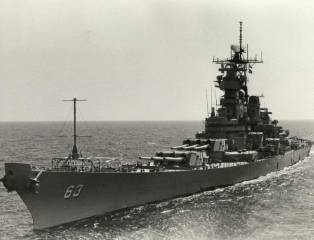
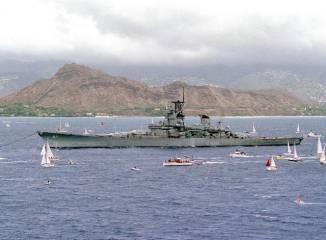
About the Ship's Coat of Arms:
 The trident symbolizes sea power and its gold color symbolizes valor. The blue and gold torse (cloth band) symbolize truth and valor.
The trident symbolizes sea power and its gold color symbolizes valor. The blue and gold torse (cloth band) symbolize truth and valor.
The white peace scroll represents the Document of Surrender signed by Japan aboard MISSOURI. Superimposed on the trident are two quills, the red representing the Japanese war government and the white symbolizing the United States and her World War II allies. The green wreath of olive leaves symbolizes peace.
The fireball represents combat capabilities. The eight stars represent the eight battle stars the MISSOURI received during World War II and the Korean conflict. The wavy blue bars represent the sea and the Missouri river.
The arrow shape is the symbol of combat ability. The ship's motto, "VIS AD LIBERTATEM" is Latin for "Strength for Freedom".
History of USS MISSOURI:
The fourth MISSOURI, the last battleship completed by the United States, was laid down 6 January 1941 by New York Naval Shipyard; launched 29 January 1944; sponsored by Miss Margaret Truman, daughter of then Senator from MISSOURI Harry S Truman, later President; and commissioned 11 June 1944, Capt. William M. Callaghan in command.
After trials off New York and shakedown and battle practice in Chesapeake Bay, MISSOURI departed Norfolk 11 November 1944, transited the Panama Canal 18 November and steamed to San Francisco for final fitting out as fleet flagship. She stood out of San Francisco Bay 14 December and arrived Ulithi, West Caroline Islands, 13 January 1945. There she was temporary headquarters ship for Vice Adm. Marc A. Mitscher. The battleship put to sea 27 January to serve in the screen of the LEXINGTON carrier task group of Mitscher's TF 58, and on 16 February her flattops launched the first air strikes against Japan since the famed Doolittle raid that had been launched from carrier HORNET in April 1942.
MISSOURI then steamed with the carriers to Iwo Jima where her mighty guns provided direct and continuous support to the invasion landings begun 19 February. After TF 58 returned to Ulithi 5 March, MISSOURI was assigned to the YORKTOWN carrier task group. On 14 March MISSOURI departed Ulithi in the screen of the fast carriers and steamed to the Japanese mainland. During strikes against targets along the coast of the Inland Sea of Japan beginning 18 March, MISSOURI splashed four Japanese aircraft.
Raids against airfields and naval bases near the Inland Sea and southwestern Honshu continued. WASP, crashed by an enemy suicide plane 19 March, resumed flight operations within an hour. Two bombs penetrated the hangar deck and decks aft of carrier FRANKLIN, leaving her dead in the water within 50 miles of the Japanese mainland. The cruiser PITTSBURGH took FRANKLIN in tow until she gained speed to 14 knots. MISSOURI’s carrier task group provided cover for FRANKLIN’s retirement toward Ulithi until 22 March, then set course for pre-invasion strikes and bombardment of Okinawa.
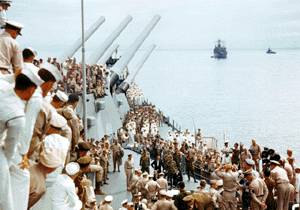 MISSOURI joined the fast battleships of TF 58 in bombarding the southeast coast of Okinawa 24 March 1945, an action intended to draw enemy strength from the west coast beaches that would be the actual site of invasion landings. MISSOURI rejoined the screen of the carriers as Marine and Army units stormed the shores of Okinawa on the morning of 1 April. Planes from the carriers shattered a special Japanese attacking force led by battleship YAMATO 7 April. YAMATO, the world's largest battlewagon, was sunk, as were a cruiser and a destroyer. Three other enemy destroyers were heavily damaged and scuttled. Four remaining destroyers, sole survivors of the attacking fleet, were damaged and retired to Sasebo.
MISSOURI joined the fast battleships of TF 58 in bombarding the southeast coast of Okinawa 24 March 1945, an action intended to draw enemy strength from the west coast beaches that would be the actual site of invasion landings. MISSOURI rejoined the screen of the carriers as Marine and Army units stormed the shores of Okinawa on the morning of 1 April. Planes from the carriers shattered a special Japanese attacking force led by battleship YAMATO 7 April. YAMATO, the world's largest battlewagon, was sunk, as were a cruiser and a destroyer. Three other enemy destroyers were heavily damaged and scuttled. Four remaining destroyers, sole survivors of the attacking fleet, were damaged and retired to Sasebo.
On 11 April MISSOURI opened fire on a low-flying suicide plane which penetrated the curtain of her shells to crash just below her main deck level. The starboard wing of the plane was thrown far forward, starting a gasoline fire at 5-inch Gun Mount No. 3. Yet the battleship suffered only superficial damage, and the fire was brought quickly under control.
About 2305 on 17 April 1945, MISSOURI detected an enemy submarine 12 miles from her formation. Her report set off a hunter-killer operation by carrier BATAAN and four destroyers which sank Japanese submarine I-56.
MISSOURI was detached from the carrier task force off Okinawa 5 May and sailed for Ulithi. During the Okinawa campaign she had shot down five enemy planes, assisted in the destruction of six others, and scored one probable kill. She helped repel 12 daylight attacks of enemy raiders and fought off four night attacks on her carrier task group. Her shore bombardment destroyed several gun emplacements and many other military, governmental, and industrial structures.
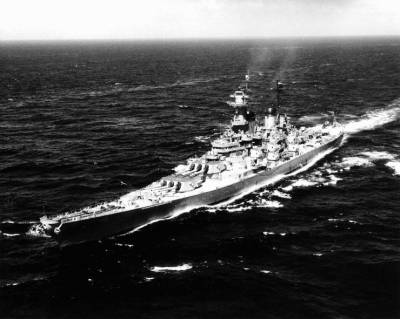 MISSOURI arrived Ulithi 9 May 1945 and thence proceeded to Apra Harbor, Guam, 18 May. That afternoon Adm. William F. Halsey, Jr., Commander 3d Fleet, broke his flag in MISSOURI. She passed out of the harbor 21 May, and by 27 May was again conducting shore bombardment against Japanese positions on Okinawa. MISSOURI now led the mighty 3d Fleet in strikes on airfields and installations on Kyushu 2 and 3 June. She rode out a fierce storm 5 and 6 June that wrenched off the bow of the cruiser PITTSBURGH. Some topside fittings were smashed, but MISSOURI suffered no major damage. Her fleet again struck Kyushu 8 June, then hit hard in a coordinated air-surface bombardment before retiring towards Leyte. She arrived San Pedro, Leyte, 13 June 1945, after almost three months of continuous operations in support of the Okinawa campaign.
MISSOURI arrived Ulithi 9 May 1945 and thence proceeded to Apra Harbor, Guam, 18 May. That afternoon Adm. William F. Halsey, Jr., Commander 3d Fleet, broke his flag in MISSOURI. She passed out of the harbor 21 May, and by 27 May was again conducting shore bombardment against Japanese positions on Okinawa. MISSOURI now led the mighty 3d Fleet in strikes on airfields and installations on Kyushu 2 and 3 June. She rode out a fierce storm 5 and 6 June that wrenched off the bow of the cruiser PITTSBURGH. Some topside fittings were smashed, but MISSOURI suffered no major damage. Her fleet again struck Kyushu 8 June, then hit hard in a coordinated air-surface bombardment before retiring towards Leyte. She arrived San Pedro, Leyte, 13 June 1945, after almost three months of continuous operations in support of the Okinawa campaign.
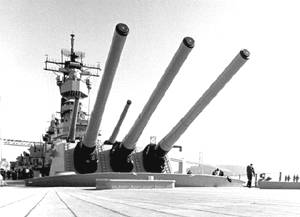 Here she prepared to lead the 3d Fleet in strikes at the heart of Japan from within its home waters. The mighty fleet set a northerly course 8 July to approach the Japanese mainland. Raids took Tokyo by surprise 10 July, followed by more devastation at the juncture of Honshu and Hokkaido 13 and 14 July. For the first time, a naval gunfire force wrought destruction on a major installation within the home islands when MISSOURI closed the shore to join in a bombardment 15 July that rained destruction on the Nihon Steel Co. and the Wanishi Ironworks at Muroran, Hokkaido.
Here she prepared to lead the 3d Fleet in strikes at the heart of Japan from within its home waters. The mighty fleet set a northerly course 8 July to approach the Japanese mainland. Raids took Tokyo by surprise 10 July, followed by more devastation at the juncture of Honshu and Hokkaido 13 and 14 July. For the first time, a naval gunfire force wrought destruction on a major installation within the home islands when MISSOURI closed the shore to join in a bombardment 15 July that rained destruction on the Nihon Steel Co. and the Wanishi Ironworks at Muroran, Hokkaido.
During the night of 17-18 July MISSOURI bombarded industrial targets in the Hichiti area, Honshu. Inland Sea aerial strikes continued through 25 July 1945, and MISSOURI guarded the carriers as they struck hard blows at the Japanese capital. As July ended the Japanese no longer had any home waters. MISSOURI had led her fleet to gain control of the air and sea approaches to the very shores of Japan.
Strikes on Hokkaido and northern Honshu resumed 9 August 1945, the day the second atomic bomb was dropped. Next day, at 2054, MISSOURI’s men were electrified by the unofficial news that Japan was ready to surrender, provided that the Emperor's prerogatives as a sovereign ruler were not compromised. Not until 0745, 15 August, was word received that President Truman had announced Japan's acceptance of unconditional surrender.
Adm. Sir Bruce Fraser, RN (Commander, British Pacific Fleet) boarded MISSOURI 16 August, and conferred the order Knight of the British Empire upon Admiral Halsey. MISSOURI transferred a landing party of 200 officers and men to battleship IOWA for temporary duty with the initial occupation force for Tokyo 21 August. MISSOURI herself entered Tokyo Bay early 29 August to prepare for the normal surrender ceremony.
High-ranking military officials of all the Allied Powers were received on board 2 September. Fleet Adm. Chester Nimitz boarded shortly after 0800, and General of the Army Douglas MacArthur (Supreme Commander for the Allies) came on board at 0843. The Japanese representatives, headed by Foreign Minister Mamoru Shigemitsu, arrived at 0856. At 0902 General MacArthur stepped before a battery of microphones and the 23-minute surrender ceremony was broadcast to the waiting world. By 0930 the Japanese emissaries had departed.
The afternoon of 5 September Admiral Halsey transferred his flag to battleship SOUTH DAKOTA. Early next day MISSOURI departed Tokyo Bay to receive homeward bound passengers at Guam, thence sailed unescorted for Hawaii. She arrived Pearl Harbor 20 September and flew Admiral Nimitz' flag on the afternoon of 28 September for a reception.
The next day MISSOURI departed Pearl Harbor bound for the eastern seaboard of the United States. She reached New York City 23 October and broke the flag of Adm. Jonas Ingram, commander in chief, Atlantic Fleet. MISSOURI boomed out a 21-gun salute 27 October as President Truman boarded for Navy day ceremonies. In his address the President stated that "control of our sea approaches and of the skies above them is still the key to our freedom and to our ability to help enforce the peace of the world."
After overhaul in the New York Naval Shipyard and a training cruise to Cuba, MISSOURI returned to New York. The afternoon of 21 March 1946 she received the remains of the Turkish Ambassador to the United States, Melmet Munir Ertegun. She departed 22 March for Gibraltar and 5 April anchored in the Bosphorus off Istanbul. She rendered full honors, including the firing of a 19-gun salute during both the transfer of the remains of the late Ambassador and the funeral ashore.
MISSOURI departed Istanbul 9 April and entered Phaleron Bay, Piracus, Greece, the following day for an overwhelming welcome by Greek government officials and people. She had arrived in a year when there were ominous Russian overtures and activities in the entire Balkan area. Greece had become the scene of a Communist-inspired civil war, as Russia sought every possible extension of Soviet influence throughout the Mediterranean region. Demands were made that Turkey grant the Soviets a base of seapower in the Dodecanese Islands and joint control of the Turkish Straits leading from the Black Sea into the Mediterranean.
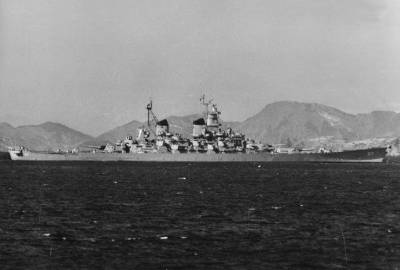 The voyage of MISSOURI to the eastern Mediterranean gave comfort to both Greece and Turkey. News media proclaimed her a symbol of U.S. interest in preserving Greek and Turkish liberty. With an August decision to deploy a strong fleet to the Mediterranean, it became obvious that, the United States intended to use her naval sea and air power to stand firm against the tide of Soviet subversion.
The voyage of MISSOURI to the eastern Mediterranean gave comfort to both Greece and Turkey. News media proclaimed her a symbol of U.S. interest in preserving Greek and Turkish liberty. With an August decision to deploy a strong fleet to the Mediterranean, it became obvious that, the United States intended to use her naval sea and air power to stand firm against the tide of Soviet subversion.
MISSOURI departed Piraeus 26 April, touching at Algiers and Tangiers before arriving Norfolk 9 May. She departed for Culebra Island 12 May to join Admiral Mitcher's 8th Fleet in the Navy's first large-scale postwar Atlantic training maneuvers. The battleship returned to New York City 27 May, and spent the next year steaming Atlantic coastal waters north to the Davis Straits and south to the Caribbean on various Atlantic command training exercises.
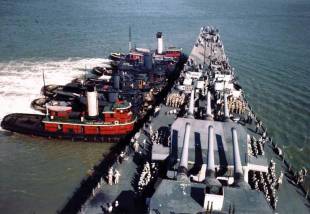 MISSOURI arrived Rio de Janeiro 30 August 1947 for the Inter- American Conference for the Maintenance of Hemisphere Peace and Security. President Truman boarded 2 September to celebrate the signing of the Rio Treaty which broadened the Monroe Doctrine, stipulating that an attack on one of the signatory American States would be considered an attack on all.
MISSOURI arrived Rio de Janeiro 30 August 1947 for the Inter- American Conference for the Maintenance of Hemisphere Peace and Security. President Truman boarded 2 September to celebrate the signing of the Rio Treaty which broadened the Monroe Doctrine, stipulating that an attack on one of the signatory American States would be considered an attack on all.
The Truman family boarded MISSOURI 7 September 1947 to return to the United States and debarked at Norfolk 19 September. Overhaul in New York (23 September to 10 March 1948) was followed by refresher training at Guantanamo Bay. Summer 1948 was devoted to midshipman and reserve training cruises. The battleship departed Norfolk 1 November for a second 3-week Arctic cold weather training cruise to the Davis Straits. The next two years MISSOURI participated in Atlantic command exercises ranging from the New England coast to the Caribbean, alternated with two midshipman summer training cruises. She was overhauled at Norfolk Naval Shipyard 23 September 1949 to 17 January 1950.
Now the only U.S. battleship in commission, MISSOURI was proceeding seaward on a training mission from Hampton Roads early 17 January when she ran aground at a point 1.6 miles from Thimble Shoals Light, near Old Point Comfort. She traversed shoal water a distance of three ship lengths from the main channel. Lifted some seven feet above waterline, she stuck hard and fast. With the aid of tugs, pontoons, and an incoming tide, she was refloated 1 February 1950.
From mid-February until 15 August MISSOURI conducted midshipman and reserve training cruises out of Norfolk. She departed Norfolk 19 August to support U.N. forces in their fight against Communist aggression in Korea.
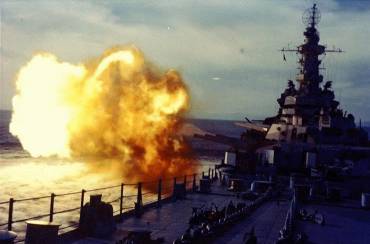 MISSOURI joined the U.N. just west of Kyushu 14 September, becoming flagship of Rear Adm. A. E. Smith. The first American battleship to reach Korean waters, she bombarded Samchok 15 September 1950 in a diversionary move coordinated with the Inchon landings. In company with cruiser HELENA and two destroyers, she helped prepare the way for the 8th Army offensive.
MISSOURI joined the U.N. just west of Kyushu 14 September, becoming flagship of Rear Adm. A. E. Smith. The first American battleship to reach Korean waters, she bombarded Samchok 15 September 1950 in a diversionary move coordinated with the Inchon landings. In company with cruiser HELENA and two destroyers, she helped prepare the way for the 8th Army offensive.
MISSOURI arrived Inchon 19 September, and 10 October became flagship of Rear Adm. J. M. Higgins, commander, Cruiser Division 5. She arrived Sasebo 14 October, where she became flagship of Vice Adm. A. D. Struble, Commander, 7th Fleet. After screening carrier VALLEY FORGE along the east coast of Korea, she conducted bombardment missions 12 to 26 October in the Chonjin and Tanchon areas, and at Wonsan. After again screening carriers eastward of Wonsan she moved into Hungnam 23 December to provide gunfire support about the Hunguam defense perimeter until the last U.N. troops, the U.S. 3d Infantry Division, were evacuated by way of the sea on Christmas Eve 1950.
MISSOURI conducted additional operations with carriers and systematic shore bombardments off the east coast of Korea until 19 March 1951. She arrived Yokosuka 24 March, and 4 days later was relieved of duty in the Far East. She departed Yokosuka 28 March, and upon arrival Norfolk 27 April became flagship of Rear Adm. J. L. Holloway, Jr., commander, Cruiser Force, Atlantic Fleet. Summer 1951 she engaged in two midshipman training cruises to northern Europe. MISSOURI entered Norfolk Naval Shipyard 18 October for overhaul until 30 January 1952.
Following winter and spring training out of Guantanamo Bay, MISSOURI visited New York, then set course from Norfolk 9 June for another midshipman cruise. She returned to Norfolk 4 August and entered Norfolk Naval Shipyard to prepare for a second tour in the Korean Combat Zone.
MISSOURI stood out of Hampton Roads 11 September 1952 and arrived Yokosuka 17 October. She broke the flag of Vice Adm. J. J. Clark, commander of the 7th Fleet, 19 October. Her primary mission was to provide seagoing artillery support by bombarding enemy targets in the Chaho-Tanchon area, at Chongjin, in the Tanchon-Sonjin area, and at Chaho, Wonsan, Hamhung, and Hungnam during the period 25 October through 2 January 1953.
MISSOURI put in to Inchon 5 January 1953 and sailed thence to Sasebo, Japan. Gen. Mark Clark, Commander in Chief, U.N. Command, and Adm. Sir Guy Russell, RN, commander of the British Far East Station, visited the battleship 23 January. In the following weeks, MISSOURI resumed "Cobra" patrol along the east coast of Korea in direct support of troops ashore. Repeated strikes against Wonsan, Tanehon, Hungnam, and Kojo destroyed main supply routes along the eastern seaboard.
The last gunstrike mission by MISSOURI was against the Kojo area 25 March. She sustained a grievous casualty 6 March 1953, when her commanding officer Capt. Warner R. Edsall suffered a fatal heart attack while conning her through the submarine net at Sasebo. She was relieved as the 7th Fleet flagship 6 April by battleship NEW JERSEY.
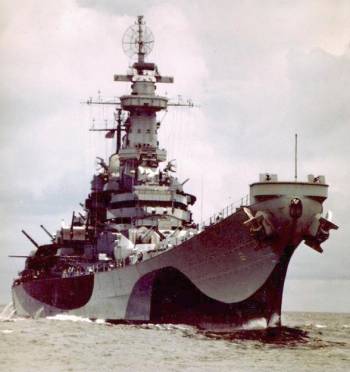 MISSOURI departed Yokosuka 7 April 1953 and arrived Norfolk 4 May, to become flagship for Rear Adm. E. T. Woolridge, commander, Battleships-Cruisers, Atlantic Fleet, 14 May. She departed 8 June on a midshipman training cruise, returned to Norfolk 4 August, and was overhauled in Norfolk Naval Shipyard 20 November to 2 April 1954. Now the flagship of Rear Adm. R. E. Kirby, who had relieved Admiral Woolridge, MISSOURI departed Norfolk 7 June as flagship of the midshipman training cruise to Lisbon and Cherbourg. She returned Norfolk 3 August and departed the 23d for inactivation on the West Coast. After calls at Long Beach and San Francisco, MISSOURI arrived Seattle 15 September 1954. Three days later she entered Puget Sound Naval Shipyard where she decommissioned 26 February 1955, entering the Bremerton group, Pacific Reserve Fleet.
MISSOURI departed Yokosuka 7 April 1953 and arrived Norfolk 4 May, to become flagship for Rear Adm. E. T. Woolridge, commander, Battleships-Cruisers, Atlantic Fleet, 14 May. She departed 8 June on a midshipman training cruise, returned to Norfolk 4 August, and was overhauled in Norfolk Naval Shipyard 20 November to 2 April 1954. Now the flagship of Rear Adm. R. E. Kirby, who had relieved Admiral Woolridge, MISSOURI departed Norfolk 7 June as flagship of the midshipman training cruise to Lisbon and Cherbourg. She returned Norfolk 3 August and departed the 23d for inactivation on the West Coast. After calls at Long Beach and San Francisco, MISSOURI arrived Seattle 15 September 1954. Three days later she entered Puget Sound Naval Shipyard where she decommissioned 26 February 1955, entering the Bremerton group, Pacific Reserve Fleet.
In reserve, "Mighty Mo" remained very much a part of the Navy and was a popular center of attention at Bremerton. Each year approximately 100,000 visitors boarded her by a once-daily, weekday, 75-minute guided bus tour of the Pacific Fleet at Bremerton.
In May 1984, the sleeping giant once again heard the call to arms. The United States Navy was recalling its dreadnoughts for modernization and updating.
These weapons platforms were needed for an expanded 600-ship Navy to lead battle groups and help establish the U.S. naval presence around the globe. USS MISSOURI was recommissioned in San Francisco 10 May 1986.
"This is a day to celebrate the rebirth of American sea power." said then-Secretary of Defense Casper W. Weinberger to an audience of 10,000 witnessing the historic ceremony. He admonished the crew to "listen for the footsteps of those who have gone before you. They speak to you of honor and the importance of duty. They remind you of your own traditions."
Four months later, The nation's most historic battleship departed her new homeport of Long Beach for an around-the-world cruise, bringing her message of "Strength for Freedom" to eight nations: Australia, Diego Garcia, Egypt, Turkey, Italy, Spain, Portugal and Panama.
On July 25, 1987, the crew of MISSOURI was ordered for duty in the troubled waters of the Persian Gulf and departed on a six- month deployment to the Indian Ocean and North Arabian Sea. The ship spent more than 100 continuous days at sea in a hot, tense environment which posed a striking contrast to the World Cruise months earlier. As the centerpiece for Battlegroup Echo, MISSOURI steamed into the volatile operating arena and maintained a level of peace in the Middle East, which remained fragile and vital.
MISSOURI returned to the United States via Diego Garcia, Australia and Hawaii in early 1988. Several months later, MISSOURI’s crew again returned to Hawaiian waters for the Rim of the Pacific (RimPac) exercises involving more than 50,000 members of the Armed Forces and ships from the navies of Australia, Canada, Japan and the United States. Port visits in 1988 included Vancouver and Victoria Island in Canada, San Diego, Seattle and Bremerton.
1989 was a hectic year in the life of MISSOURI. The early part of the year found the ship in the Long Beach Naval Shipyard for routine maintenance. Independence Day weekend brought its share of fireworks. Academy Award-winning actress/singer Cher made a rock music video on MISSOURI foc'sle. The video also starred a couple hundred members of the crew, and although controversial due to Cher's outfit, it was a smash. The song "If I Could Turn Back Time" was a chart topper. A few months later, MISSOURI and crew departed for Pacific Exercise (PacEx)'89, which found MISSOURI and her sister ship USS NEW JERSEY performing a simultaneous gunfire demonstration for the aircraft carriers USS ENTERPRISE (CVN 65) and USS NIMITZ (CVN 68). The highlight of PacEx was a port visit in Pusan, Republic of Korea.
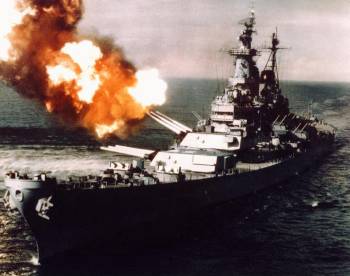 In 1990, MISSOURI again took part in the RimPac Exercise with ships from Australia, Canada, Japan and Korea in addition with United States Navy ships.
In 1990, MISSOURI again took part in the RimPac Exercise with ships from Australia, Canada, Japan and Korea in addition with United States Navy ships.
On August 2, 1990, Iraqi dictator Saddam Hussein invaded the tiny emirate of Kuwait. In the middle of the month, President George Bush sent the first of several hundred thousand troops, along with a strong force of naval support to Saudi Arabia and the Arabian Gulf area to support a multi-national force in a standoff with the Iraqi dictator. A scheduled four-month Western Pacific port-to-port cruise for September was cancelled just a few days before the ship was to leave. MISSOURI was put on hold in anticipation of being called to support the still-growing force in the Middle East.
The word came. MISSOURI departed in mid-November for the troubled waters of the Arabian Gulf. Amid the press coverage that a ship the stature of MISSOURI is used to receiving, the mighty dreadnought pulled away from Pier 6 at Long Beach and headed for Hawaii, first stop on the long journey to the Gulf. MISSOURI’s crew celebrated Thanksgiving in Pearl Harbor, then headed for the Philippines for more work-ups en route to the Persian Gulf. Next stop after Subic Bay was Pattaya Beach, Thailand, for a couple days of liberty, amidst the underway training of gunnery, General Quarters and protection from the possibility of attacks by chemical weapons.
MISSOURI arrived in the Gulf a few days into the new year of 1991, and immediately answered a distress call from a ship on fire in Gulf waters. MISSOURI dispatched fire fighting experts to help, and then journeyed onto the island emirate of Bahrain.
After a very short liberty in Bahrain, MISSOURI was called on to begin heading north for operations. It was a few days after that, on January 17, 1991, the ship fired Tomahawk missiles at Iraqi-held targets. The early morning fireworks helped mark the start of the war.
While the United States and other countries around the world heard the words "The liberation of Kuwait has begun," MISSOURI continued to fire Tomahawks - 28 in all.
The war continued as Allied air superiority continued to dominate the demoralized Iraqi army. In February 1991, MISSOURI fired her 16-inch guns - the first firing of her guns in anger since the Korean conflict in the 1950s. Firing at targets just north of Khafji, Saudi Arabia, the ship assisted shore-based ground units in their tasks. MISSOURI shared gunnery duties with USS WISCONSIN (BB 64) and the two battleship continued to hammer at their targets with 16-inch gunnery. Near the end of the month, MISSOURI turned her big guns on Faylaka Island and Kuwait City in support of the ground offensive. Iraq agreed to a cease fire agreement on February 28, 1991.
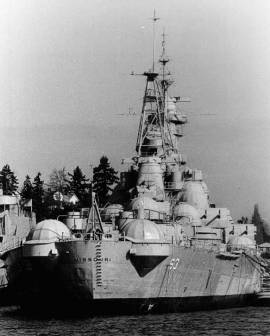 In mid-March, MISSOURI made the long transit back to the West Coast, via two ports in Australia: Perth and Hobart, Tasmania. The ship returned to a joyous reunion with loved ones six months to the day she departed.
In mid-March, MISSOURI made the long transit back to the West Coast, via two ports in Australia: Perth and Hobart, Tasmania. The ship returned to a joyous reunion with loved ones six months to the day she departed.
MISSOURI’s last year found the ship visiting Seattle, Vancouver, British Columbia and San Francisco.
The ship left for one final mission the day after Thanksgiving 1991. Heading across the Pacific, "Mighty Mo's" last act of diplomacy was to visit Pearl Harbor for the remembrance of those who had died 50 years earlier on 7 December 1941. It is a rare sight indeed to see the beginning and the end of U.S. involvement in World War II in the same port. Following the commemoration, MISSOURI’s last cruise was back to the U.S. to off-load over 1,000 16-inch projectiles, more than 6,000 5- inch projectiles, 16 Harpoon missile canisters and all remaining Tomahawk cruise missiles to prepare for the ship's imminent decommissioning.
MISSOURI, veteran of four wars, was decommissioned for the final time on 31 March 1992 at Long Beach, Calif. Her final commanding officer, Capt. A.L. Kaiss, wrote this final note for the ship's last Plan of the Day:
"Our final day has arrived. Today the final chapter in battleship MISSOURI’s history will be written. It's often said that the crew makes the command. There is no truer statement ... for it's the crew of this great ship that made this a great command. You are a special breed of sailors and Marines and I am proud to have served with each and every one of you. To you who have made the painful journey of putting this great lady to sleep, I thank you. For you have had the toughest job. To put away a ship that has become as much a part of you as you are to her is a sad ending to a great tour. But take solace in this — you have lived up to the history of the ship and those who sailed her before us. We took her to war, performed magnificently and added another chapter in her history, standing side by side our forerunners in true naval tradition. God bless you all."
On May 4, 1998, Secretary of the Navy John H. Dalton signed the donation contract officially transferring the historic battleship to the USS MISSOURI Memorial Association (MMA) of Honolulu, Hi. The ship was gently guided and delicately docked at Ford Island, Pearl Harbor, June 22 after a 2,300-mile voyage across the Pacific from Bremerton, Wash., that began May 23.
MISSOURI was subsequently tied to pier F-5 on "Battleship Row", 300 yards behind the ARIZONA Memorial. She remained there for about of three years before moved to a permanent site at the most seaward end of "Battleship Row" at piers F-2 and F-3. The grand opening for MISSOURI and her memorial museum was on January 29, 1999.
MISSOURI received three battle stars for World War II service and five for Korean service.
USS MISSOURI Patch Gallery:
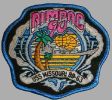 |
USS MISSOURI Image Gallery:
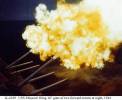 |  | 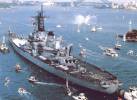 | 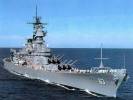 | 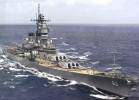 |
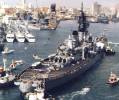 |  | 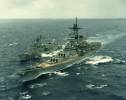 |
The photos below were taken in December 1990 and show the USS MISSOURI during a port visit to Phattaya Beach, Thailand. All photos by Reiner Weigl.
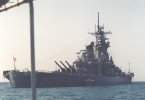 |  | 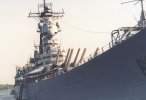 |  | 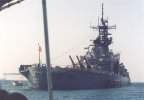 |
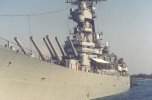 | 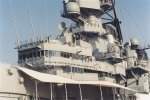 | 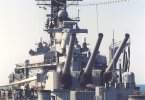 | 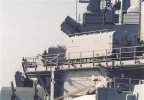 | 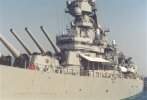 |
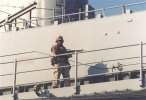 | 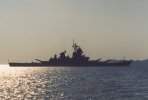 |  | 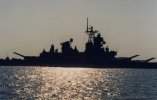 |
The photos below were taken by me on July 27, 2006, during a visit to the USS MISSOURI museum in Pearl Harbor, HI.
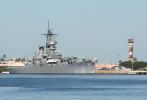 |  | 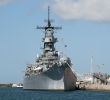 | 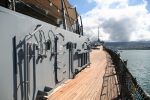 | 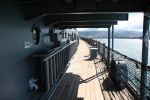 |
 | 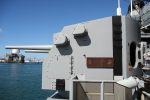 | 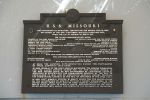 | 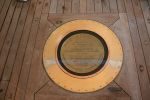 |  |
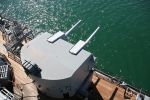 |  |  | Click here for more Photos. | |
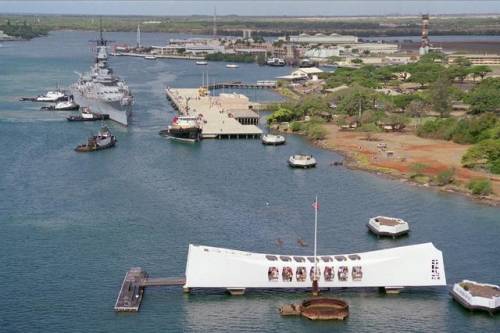
The photos below were taken by Sebastian Thoma and show the USS MISSOURI museum at Pearl Harbor, Hi., on March 18, 2022.
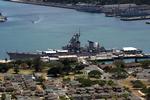 | 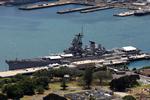 | 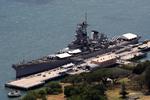 | 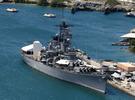 |
 Back to Battleships list.
Back to Battleships list.  Back to ships list.
Back to ships list.  Back to selection page.
Back to selection page.  Back to 1st page.
Back to 1st page.